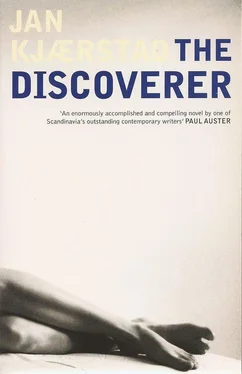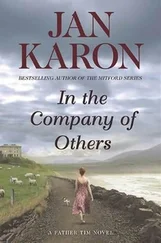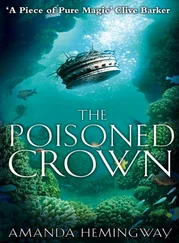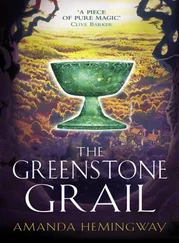Jan Kjaerstad - The Discoverer
Здесь есть возможность читать онлайн «Jan Kjaerstad - The Discoverer» весь текст электронной книги совершенно бесплатно (целиком полную версию без сокращений). В некоторых случаях можно слушать аудио, скачать через торрент в формате fb2 и присутствует краткое содержание. Год выпуска: 2009, Издательство: Arcadia Books, Жанр: Современная проза, на английском языке. Описание произведения, (предисловие) а так же отзывы посетителей доступны на портале библиотеки ЛибКат.
- Название:The Discoverer
- Автор:
- Издательство:Arcadia Books
- Жанр:
- Год:2009
- ISBN:нет данных
- Рейтинг книги:5 / 5. Голосов: 1
-
Избранное:Добавить в избранное
- Отзывы:
-
Ваша оценка:
- 100
- 1
- 2
- 3
- 4
- 5
The Discoverer: краткое содержание, описание и аннотация
Предлагаем к чтению аннотацию, описание, краткое содержание или предисловие (зависит от того, что написал сам автор книги «The Discoverer»). Если вы не нашли необходимую информацию о книге — напишите в комментариях, мы постараемся отыскать её.
The Discoverer — читать онлайн бесплатно полную книгу (весь текст) целиком
Ниже представлен текст книги, разбитый по страницам. Система сохранения места последней прочитанной страницы, позволяет с удобством читать онлайн бесплатно книгу «The Discoverer», без необходимости каждый раз заново искать на чём Вы остановились. Поставьте закладку, и сможете в любой момент перейти на страницу, на которой закончили чтение.
Интервал:
Закладка:
It is to be hoped that many do still remember Aktuell , that admirable weekly, which had its foundations in the labour movement and its roots in the old ideal of popular education. Younger generations may well find it hard to imagine that such a thing ever existed in Norway. And if anyone should wonder whether we have lost sight in Norway of certain ideals and values, all you have to do is lay some copies of the old Aktuell alongside its modern-day equivalent: the tabloid Se og Hør . Jonas was, of course, familiar with Aktuell before he and Leonard became best friends, not least thanks to the pile of old copies in the attic of his grandfather’s house on Hvaler. Jonas never tired of reading those dusty magazines. Which is to say: he looked at the pictures — photographs of reindeer races at Kautokeino, or from a revival meeting in Skien, or from a farm halfway up a mountainside run by two sisters, little old ladies in their eighties, or from Mandal where — Jonas stared in disbelief — Arnardo’s elephants could be seen lumbering through the streets. I think it is safe to say that during the first couple of decades after the war this magazine represented the contemporary equivalent of television. Like an earlier day’s Round Norway it presented the country to the people.
While waiting for Leonard to finish his dinner meatballs Jonas would sit in the Knutzens’ red-painted basement, leafing through the back numbers of Aktuell ranged proudly on the shelf alongside the Workers’ Encyclopedia — as if this were all the learning one needed. He studied picture spreads depicting the building, step-by-step, of a tanker, or the life at the huge steelworks in Mo i Rana. Some of the street scenes in the older numbers were especially fascinating, not least if the subjects were familiar to him. Had the Eastern station really looked like that? And the bus stop by the gasworks? Such photographs were clear proof of how time flew. Only fifteen years ago, and yet things seemed unrecognisable. For Jonas, Aktuell was rather like an Illustrated Classics version of an ideology. Jonas Wergeland never read up on the theoreticians of the labour movement, but he always felt that he had some knowledge of the subject, just as he knew a bit about Joseph Conrad’s Lord Jim after reading the comic-strip version.
Aktuell presented articles from all over the world, but what Jonas liked best were the features and series on Norway. From the Red Room’s somewhat dilapidated sofa he could accompany the fishermen to the fishing fields, lumberjacks into the forest, construction workers into tunnels; Aktuell described a day in the life of a checkout lady, it followed the course of rubbish men through the city and depicted the world inhabited by the potato peelers at the Rainbow Restaurant. Below many of his favourite photographs Jonas could read the name of Leonard’s father, Olav Knutzen. Sometimes all it said was OK, as if this were a stamp indicating that these pictures or — why not? — the reality they portrayed had been approved. ‘In a basement room in Grorud I got to know Norway,’ he was to say later. When Jonas Wergeland thought back on the golden age of the Norwegian Labour Party he always thought of Aktuell magazine.
What with his father working in the church and his mother at the Grorud Ironmonger’s, Jonas was a little envious of Leonard. Both his parents worked in the city centre. And not only that, but in buildings on the city’s finest square. Because if Oslo had a heart at that time, a real, pulsating heart — as London had its Smithfield Market, Paris had Les Halles and Rome the Campo de’ Fiori — then it had to be Youngstorget. Leonard’s mother worked in an office at the People’s House, headquarters of the National Federation of Trade Unions, and his father was based on the first floor of the People’s Theatre building itself, when, that is, he was not out travelling.
In the summer especially, the boys were forever running into town to meet Olav Knutzen on Youngstorget. Leonard always swelled with pride when his father came walking towards them with his Leica or, even better, the two-eyed Rolleiflex dangling over his stomach. There was something so bohemian about his big, burly figure. Apart from the eyes. These Jonas thought of as sharp . It was almost as if every now and again the z in the middle of his surname triggered a flash in his eyes, a little bolt of lightning. Olav Knutzen often took pictures of the boys standing among the market stalls on the square, munching plums or pears. In later years Jonas would often look at the copies of these photographs which he had been given, because they documented something he had already forgotten: how that time-honoured square had once been a cornucopian fruit and vegetable basket, possibly even a Red Room, for the whole city.
Leonard was proud of his father, and especially of those keen eyes of his. ‘That’s what it all comes down to,’ he often said when they were sitting in the Knutzens’ basement room. ‘The eye. The ability to perceive the world.’ He believed that he had inherited this gift. Leonard was, in general, uncommonly interested in the attributes passed on from parent to child. And Jonas had to admit that there was something about Leonard’s eyes, a quality reminiscent of a finely ground optic, an exceptional system of lenses, of the sort found in a Hasselblad camera. Jonas had been aware of this right from the moment when Leo stepped into his life, in a pair of Beatles boots, after the brushfire: those dark, alert eyes which seemed constantly to be on the lookout for things that were hidden from others. ‘You have a “da Vinci eye”,’ Jonas told him. They agreed to train this one sense: their sight. As a beginning. And in so doing they might even find a direction for their anger; discover, throw into relief the one detail which would lift the lid on the whole shebang. And that was exactly what Leonard would, unwittingly, do.
Since there was another reason, besides the colour of its walls, for calling their basement den the Red Room, the most obvious form of training seemed to be to join Olav Knutzen in the darkroom which he had set up in one of the storage rooms in the basement. Jonas was in his element in that dim, orange light, surrounded by the sweetish smell of chemicals; he loved the sense of anticipation as shadows began to form on the white paper in the developing dish, to then consolidate into sharp images in the clear liquid: Jonas and Leonard, grinning, each with their ice cream, and with the police headquarters and Youngstorget arcade in the background; a close-up of Jonas with a plum between his teeth, so sharp and with so much depth to it that the dusty, purplish bloom on the plum was readily discernible even though the print was in black-and-white. Later, when Jonas thought of Olav Knutzen, he would envy the way he could endow a snapshot with an eternal dimension, something which the ephemeral images on the TV screen could never do.
For Jonas, the darkroom with its red ambience and its chemical processes also came to symbolise a space one could inhabit mentally. Soon he was going to fall in love with a girl called Eva. Very much in love. As if his wrath had found its parallel in desire . This was in the middle of that stage in life when one is almost always in love, when one suddenly has the ability to blow up the tiniest detail to colossal proportions, not to mention a capacity for developing the most bizarre images in one’s mind. This is a time when, as most people seem to intuit, it is only a short stumble from love to stark, staring madness.
Jonas was in the school playground one day, and it would not be too far from the truth to say that an anorak made him see red. He never did figure out how or why it happened, whether it could be attributed to a keen-honed eye or what. He felt as though he was in a darkroom, watching a face come into view on a sheet of white paper, as if out of nowhere. All of a sudden she simply stepped out of the crowd during break at Grorud School and was so obviously the One. She was one of a kind, too. Words such as ‘proud’ or ‘noble’ sprang to mind when you looked at her. Eva N. was then, and even more so later, the sort of figure whom male artists would use as a model when illustrating the Norse sagas. First and foremost she was, however, a notorious skier. She wore a red anorak all winter, as if life itself was a high moor, and in the plastic pocket in her wallet she carried a picture, not of Cliff Richard or Mick Jagger, but of cross-country champion Gjermund Eggen. She went skiing as often as she possibly could, it was her passion. Every weekend, Sundays in particular, she would set out from Grorud on long expeditions into Nordmarka. From reliable sources Jonas learned that she almost always stopped in at Sinober, the Skiing Association café at the northern end of Lillomarka, and so he devised a plan whereby he would bump into her there, accidentally on purpose and in such a way that she would take him for an expert skier, a real bouillon and malt-beer-drinking mile-eater who more or less lived on the hills in winter.
Читать дальшеИнтервал:
Закладка:
Похожие книги на «The Discoverer»
Представляем Вашему вниманию похожие книги на «The Discoverer» списком для выбора. Мы отобрали схожую по названию и смыслу литературу в надежде предоставить читателям больше вариантов отыскать новые, интересные, ещё непрочитанные произведения.
Обсуждение, отзывы о книге «The Discoverer» и просто собственные мнения читателей. Оставьте ваши комментарии, напишите, что Вы думаете о произведении, его смысле или главных героях. Укажите что конкретно понравилось, а что нет, и почему Вы так считаете.












